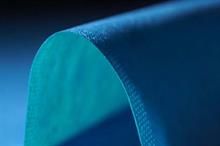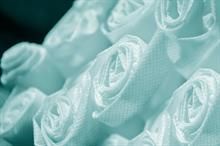
In what will be an industry first, in November this year the three companies look to initiate purse seine fishing trials with nets made from recycled ones.
It is challenging to reuse in new nets. That is because the strength and durability of fibres deteriorate during spinning owing to debris and algae contamination from immersion in the sea. The recycling programme launched last year was accordingly limited to nylon scraps and process waste from net production.
Toray thereafter leveraged a proprietary technology employing some nylon from discarded fishing nets to develop a recycled fibre that is comparable to virgin material. Nitto Seimo is manufacturing nets with this fibre. Taiyo A&F’s offshore purse saine fishing vessel Taiyo Maru No.21 will deploy them on a trial basis in the Northern Pacific Ocean this November to broaden the scope of the programme.
The three companies will confirm the commercial feasibility of these new fishing nets. They will draw on trial results; verify materials scopes, ratios, and other aspects of expanding their usage with a view to putting the new nets on the market in December 2023, Toray said in a press release.
Toray and Nitto Seimo will develop and manufacture innovative fibres and fishing nets made from process scraps and other pre-consumer materials and such post-consumer materials as used fishing nets, with Taiyo A&F testing the results. These companies will thus together deepen efforts to innovate technologies and create advanced materials to build a social system for recycling old fishing nets into new ones.
They will also keep collaborating to help reach two key Sustainable Development Goals. They are Goal 12, which is to ensure sustainable consumption and production patterns, and Goal 14, which is to conserve and sustainably use the oceans, seas and marine resources.
“This drive to develop nylon fiber-to-fiber recycling technology for fishing nets paves the way for the entire textiles industry to help materialise a circular economy by conserving and recycling resources and reducing wastes across the supply chain. One of the perspectives of the Toray Group’s sustainability vision for 2050 is a world in which people manage resources sustainably. To that end, we will keep striving to resolve such issues as resource depletion and ocean plastics pollution while cutting carbon dioxide emissions,” Mitsuo Ohya, president of Toray, said.
“This initiative will help eliminate waste and slash carbon dioxide emissions. Combined efforts across the entire supply chain, from textile and fishing net manufacturers to fishermen to recycle this equipment, have accelerated development. We will keep striving to eliminate marine plastics and materialise a carbon-neutral economy by recycling pre- and post-consumer fishing net materials,” Hiroaki Kobayashi, president of Nitto Seimo, said.
“Under our medium-term management plan, one component of our sustainability strategy is to create environmental value, including at Taiyo A&F. This means contributing to a circular economy by cutting plastics content in containers and other packaging by 30 per cent by fiscal 2030. It also entails tackling the issue of marine plastics by formulating fishing gear management guidelines and fully implementing them within the group by fiscal 2024,” Masaru Ikemi, president & CEO of Maruha Nichiro, said.
Fibre2Fashion News Desk (RR)

